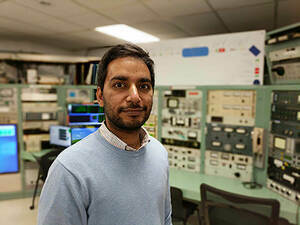
The elements that make up our world were produced in various astrophysical environments. Some are produced in the cores of stars and some in violent cataclysmic explosions such as supernovae. Notre Dame researchers have now unlocked a key piece of a puzzle in understanding how some rare-earth nuclei, such as Mo and Ru, are produced in the cosmos. Among supernovae researchers, there has been a long-standing debate on whether the production of elements heavier than Cu is terminated by what is called the Ni-Cu cycle. This new experimental result hints that this is not actually the case, as it found that the (p,α) reaction that produces the isotope 56Ni is weaker than assumed from calculations. This would favor the competing (p,γ) reaction producing 60Zn, which is the breakout pathway out of the Ni-Cu cycle and would allow for the production of heavier elements.
The experiment was performed at the TRIUMF national laboratory for Nuclear and Particle Physics in Canada. It used a unique combination of radioactive beams shot onto a frozen hydrogen target. “The use of a frozen hydrogen target is what made this measurement possible,” says Postdoctoral Research Associate Jaspreet Randhawa of the Notre Dame Nuclear Science Laboratory, the primary spokesperson for the experiment and a member of Professor Tan Ahn's research group. The new results are published in Physical Review C, (Letter) 104, L042801 (2021). This research was sponsored by the National Science Foundation and the University of Notre Dame.
Originally published by at isnap.nd.edu on November 04, 2021.